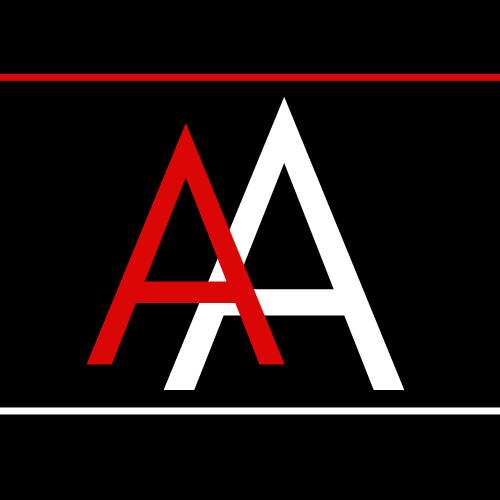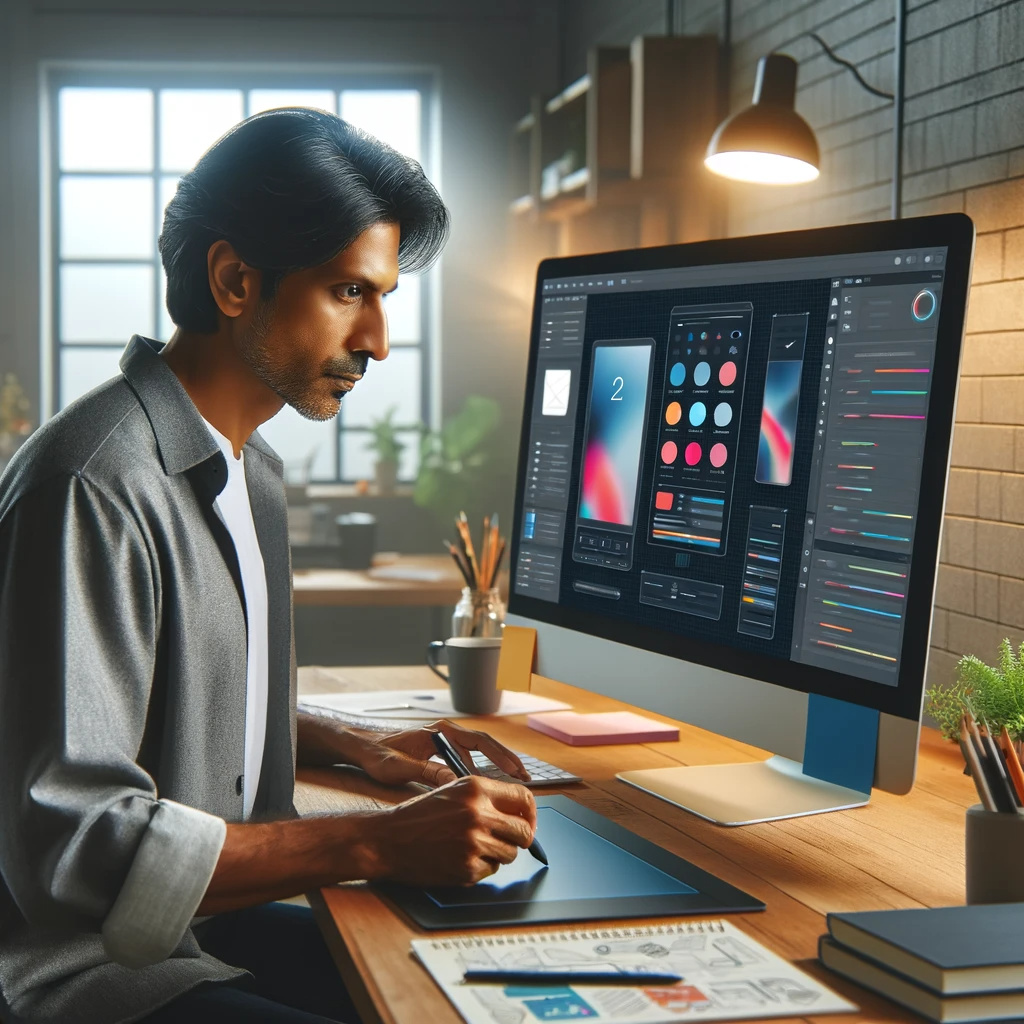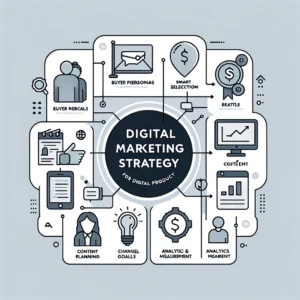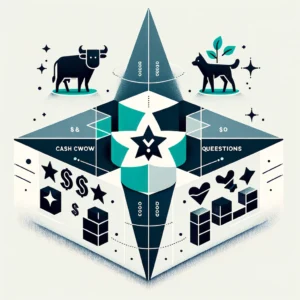The role of a Product Designer, particularly one specializing in User Experience (UX), has become increasingly pivotal. These designers are not just creators of aesthetically pleasing interfaces but are the architects of user-centric solutions that resonate with the needs and preferences of end-users. This article explores the multifaceted role of Product Designers in UX, highlighting their impact on product strategy, user satisfaction, and business success.
Gone are the days when product design was limited to the superficial aspects of a product’s appearance. In the current era, where user experience dictates the market success of products, UX Designers play a critical role in ensuring that products are not only functional and intuitive but also deliver a seamless and engaging user experience. Their work involves a deep understanding of user behavior, a knack for innovative design, and a strategic approach to aligning product functionalities with user expectations.
In the following sections, we will delve deeper into the specific responsibilities of Product Designers in UX, the tools and techniques they employ, the challenges they face, and the significant impact they have in shaping the journey of a product from a mere concept to a market-ready entity.
Defining the Role of a Product Designer in the UX Realm
The role of a Product Designer, especially within the UX sphere, is both diverse and complex. These professionals are at the forefront of creating products that are not just visually appealing, but are intuitive, user-friendly, and meet the specific needs of the target audience. But what exactly encompasses the role of a UX Product Designer?
Key Responsibilities and Skill Set
A Product Designer in the UX field typically juggles various responsibilities that span across the entire product development cycle. At the core, their primary task is to design products that offer an outstanding user experience. This involves conducting thorough user research to understand the needs, behaviors, and pain points of the target users. Based on these insights, UX Designers develop user personas and journey maps, which serve as foundational tools in designing user-centric products.
Their skill set extends beyond traditional design. It includes proficiency in user research methodologies, wireframing, prototyping, user testing, and interaction design. A keen eye for detail, a deep understanding of color theory, typography, and layout principles are also essential. Furthermore, they must be adept at using various design tools and software like Sketch, Adobe XD, Figma, and others.
The Intersection of UX and Product Strategy
UX Designers play a crucial role in bridging the gap between user needs and business objectives. They ensure that the product not only satisfies the users but also aligns with the company’s goals and market strategy. This involves collaborating closely with product managers, engineers, and other stakeholders to define the product’s vision, roadmap, and key performance indicators (KPIs).
Their strategic input is vital in making decisions about the product’s features, functionality, and overall direction. By balancing user desirability with business viability and technical feasibility, UX Designers ensure that the product is not only loved by its users but is also a viable business solution.
How Product Designers Shape User Experience

The influence of Product Designers in crafting the user experience is profound and multifaceted. They are not just designing a product; they are creating an experience that will resonate with users and make the product an integral part of their lives. Let’s explore how they achieve this.
From User Research to Implementation
The process begins with extensive user research. Product Designers gather insights about user needs, preferences, behaviors, and pain points through various methods like surveys, interviews, and usability testing. This research is crucial in forming a deep understanding of the target audience, which guides the entire design process.
Armed with this knowledge, UX Designers create wireframes and prototypes, which are iterative and evolving representations of the product. These prototypes are then tested with real users to gather feedback, which is crucial in refining and improving the design. This cycle of design, test, and iterate is central to the UX design process, ensuring that the final product is as user-friendly and effective as possible.
Balancing User Needs and Business Goals
A critical aspect of a Product Designer’s role is to balance the needs of users with the goals of the business. They are responsible for ensuring that the product is not only appealing and easy to use for the end-user but also meets the business objectives, such as increasing user engagement, boosting sales, or enhancing brand loyalty.
This balancing act requires a deep understanding of both the user and the business, as well as the ability to communicate effectively with various stakeholders. Product Designers must advocate for the user while also considering the limitations and goals of the business, finding innovative solutions that satisfy both sides.
Advanced Tools and Techniques in UX Design
In the rapidly evolving field of UX Design, staying abreast of the latest tools and techniques is crucial for Product Designers. These tools and methodologies not only streamline the design process but also enhance the effectiveness and precision of the designs. Let’s delve into some of the cutting-edge tools and techniques that are shaping the future of UX design.
Latest Trends and Software in UX Design
The landscape of UX design tools is constantly expanding, with new software and applications emerging regularly. Tools like Sketch, Adobe XD, Figma, and InVision have become staples in a Product Designer’s toolkit. These tools offer functionalities for wireframing, prototyping, user interface design, and collaboration, enabling designers to create high-fidelity designs and prototypes efficiently.
Moreover, there’s a growing emphasis on tools that facilitate better collaboration and handoff between designers and developers, such as Zeplin and Avocode. These tools help in bridging the gap between design and development, ensuring a smoother transition from design to implementation.
Measuring Success in Product Design
Beyond designing, measuring the success of designs is vital. UX Designers increasingly rely on data-driven approaches to evaluate the effectiveness of their designs. This involves using analytics tools to track user behavior, A/B testing to compare different design versions, and usability testing tools to gather direct user feedback.
Advanced techniques like eye-tracking and heat maps are also used to gain deeper insights into how users interact with a product. These methods help in understanding which areas of a design are attracting the most attention and which ones are being overlooked, enabling designers to make informed decisions to optimize the user experience.
Challenges and Opportunities in Product Design
The field of Product Design, especially within the UX domain, presents a unique set of challenges and opportunities. As technology advances and user expectations evolve, Product Designers must navigate these complexities while capitalizing on the opportunities they present. This section explores some of the common challenges faced by UX Designers and the opportunities these challenges bring.
Navigating Complex User Requirements
One of the primary challenges in product design is dealing with increasingly complex user requirements. Users today expect intuitive, seamless, and personalized experiences from their products. Meeting these expectations requires a deep understanding of user behavior, preferences, and pain points. UX Designers must constantly research and stay attuned to user needs, a task that is both challenging and time-consuming.
However, this challenge also presents an opportunity to innovate and create more sophisticated, user-centric products. By addressing complex user requirements, Product Designers can develop products that truly stand out in the market, offering unique and compelling user experiences.
Staying Ahead in a Rapidly Evolving Field
The field of UX Design is rapidly evolving, with new trends, technologies, and methodologies emerging regularly. Keeping pace with these changes is a significant challenge for Product Designers. They must continually learn and adapt to stay relevant in the field.
This constant evolution, however, also offers immense opportunities for growth and innovation. By embracing new technologies such as AI, VR, and AR, UX Designers can push the boundaries of traditional product design, creating groundbreaking user experiences. Additionally, the ever-changing landscape of UX Design offers endless possibilities for professional development and career advancement.
Conclusion
In this exploration of the role of Product Designers (UX Designers) in product development, we have uncovered the multifaceted nature of their work. From defining user needs and business goals to employing the latest tools and navigating industry challenges, Product Designers are central to the creation of user-centric products.
As we have seen, the role of a Product Designer in the UX field is not just about designing attractive interfaces but about understanding and advocating for the user throughout the product development process. Their work is a blend of art and science, requiring creativity, technical skills, and a deep understanding of human behavior.
The challenges faced by Product Designers, such as complex user requirements and the need to stay abreast of rapidly evolving technologies, are also opportunities for innovation and growth. By embracing these challenges, UX Designers can create products that are not only functional and aesthetically pleasing but also deeply resonant with users.
Looking ahead, the importance of UX Design in product development is only set to increase. As technology continues to advance and user expectations evolve, the skills and insights of Product Designers will be more valuable than ever. The future of product design is bright, and UX Designers will undoubtedly be at the forefront of shaping this future.




